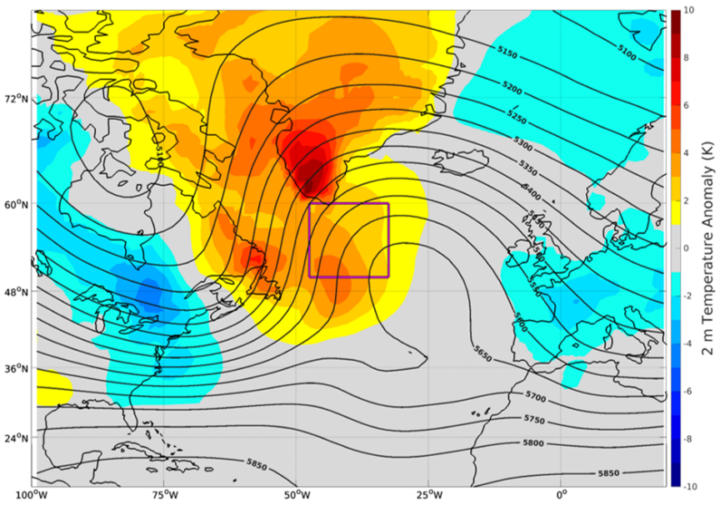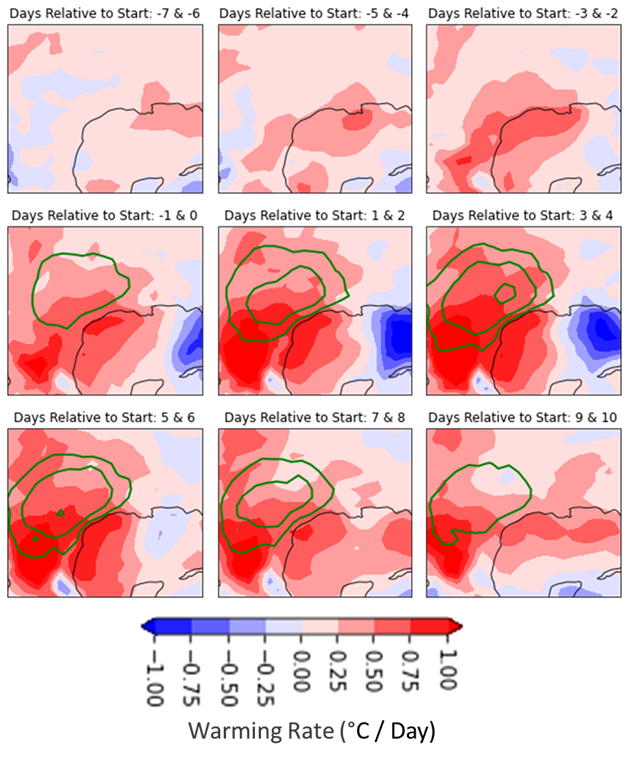
Physical Scientist
Contact Information
email veeshan.narinesingh@noaa.gov
phone (609) 452-5851
Focus Areas:
-
- Large Scale Dynamics
- Weather Extremes
Veeshan “Vee” Narinesingh
Hello! My name is Vee, and I am a Physical Scientist at GFDL. I utilize mathematics and computer programming to better understand the physics of weather and climate. I am particularly interested in large scale weather/wave patterns and some of the resultant extreme weather that they can produce. To this end, I enjoy creating hypothetical worlds using global climate models (GCM’s), and watching the weather evolve in different climates!
Large Scale Dynamics: Weather/Wave Patterns

Just like the ocean, earth’s atmosphere is a dynamic fluid that flows and churns, teeming with waves. Rossby waves and wave packets are classic examples of these waves which play a key role in driving local (and global) weather and climate. At all times, there is a background of stationary modes, induced by more permanent or slowly changing features of the planet, interacting with a symphony of transient wave disturbances. This manifests itself in storms on certain days, heat waves on others, and everything else in between, varying by region.
Highly amplified Rossby waves can lead to large, persistent anticyclones (high-pressure) in the atmosphere. These anticyclones are often referred to as atmospheric blocking events, and I find them to be absolutely fascinating! Blocking greatly affects the atmospheric flow, playing a key role in storm steering, heat waves, cold spells, and other potentially disastrous weather phenomena.
I am interested in the spatial distribution, frequency, and duration of atmospheric blocking in current, hypothetical, and future-possible climates. To understand these things I utilize climate models to build planets and see how blocking and other weather systems evolve when we do things like change the terrain, increase greenhouse gases, or warm the ocean’s surface.
Extreme Weather

In the presence of blocking, storms can be steered into and away from certain different regions, depending on the location of the block. A great example of this is in the U.S. northeast, where blocking to the north causes storms over the region to take a more west to east path, resulting in persistent, extreme storm surge.
Blocking can also produce extreme heat events, but not always, and much of these events are also driven by other factors aside from atmospheric circulation, such as the dryness or reflectivity of the terrain. Understanding the dynamical and thermodynamic aspects of extreme weather phenomena is of great interest to me.
Biographical Info
I was born and raised in the greater New York City (NYC) metropolitan area, the landing spot for my parents when they immigrated from Trinidad and Tobago. I have a bachelor’s degree and Ph.D. in physics from the NYC public college system, the City University of New York (CUNY). During my Ph.D., I was a fellow under NOAA’s Educational Partnership Program with Minority Serving Institutions (EPP MSI). This led to me collaborating with GFDL for my thesis research, doing a postdoc at the NOAA Cooperative Institute with Princeton University, and ultimately becoming a federal scientist. I have faced many challenges, wasn’t always the best student, but persevered to learn many lessons and eventually find success. I hope to inspire others!


